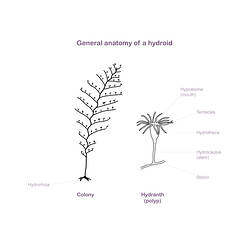General Description
Colony of individual polyps (hydranths) joined by root-like network of tubular stolons at the base. Colony shape is tree-like or bushy (arborescent). Colour: colony and corbulae (basket-like structure containing reproductive structures) pale grey, gonophores (reproductive structures) white to cream. Up to 5 cm high.
Biology
This is one of the most spectacular and graceful hydroids in southern Australia. The often form dense colonies on sponges and ascidians. Their colonies grow and become fertile in autumn to winter.
Distribution
Nw Zealand. Southern Australia.
Habitat
Subtidal in sheltered waters, epiphytic on seagrasses and algae; epizoic on bryozoans, ascidians and other benthic fauna.
More Information
-
Animal Type
-
Animal SubType
-
Brief Id
Greyish plumose colonies.
-
Maximum Size
5 cm
-
Habitats
-
Diet
Plankton or Particles
-
Diet Categories
Plankton
-
Hazards
Generally not harmful but still able to sting bare skin.
-
Endemicity
-
Commercial
No
-
Conservation Statuses
DSE Advisory List: Not listed, EPBC Act 1999: Not listed, IUCN Red List: Not listed
-
Depths
Shallow (1-30 m)
-
Water Column Locations
On or near seafloor
-
Taxon Name
-
Scientific Author
Bale, 1882
-
Common Name
Hydroid
-
Phylum
-
Class
-
Subclass
-
Order
-
Family
-
Genus
-
Species Name
plumosa




